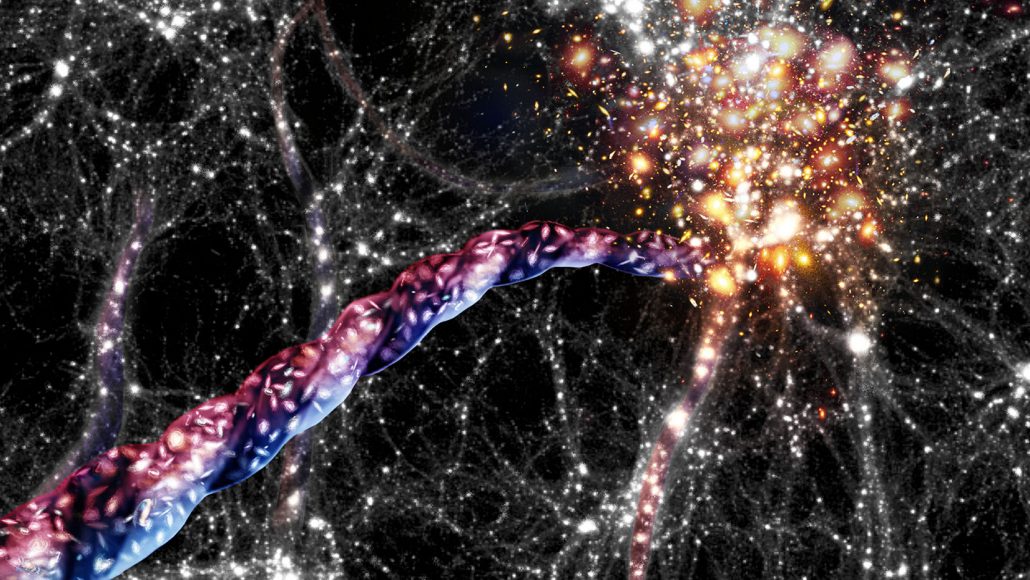3-D: Short for three-dimensional. This term is an adjective for something that has features that can be described in three dimensions — height, width and length.
astrophysics: An area of astronomy that deals with understanding the physical nature of stars and other objects in space. People who work in this field are known as astrophysicists.
Big Bang: The rapid expansion of dense matter that, according to current theory, marked the origin of the universe. It is supported by astronomers’ current understanding of the composition and structure of the universe.
colleague: Someone who works with another; a co-worker or team member.
cosmic: An adjective that refers to the cosmos — the universe and everything within it.
cosmologist: A scientist who studies the origin and development of the cosmos, or universe.
dark matter: Physical objects or particles that emit no detectable radiation of their own. They are believed to exist because of unexplained gravitational forces that they appear to exert on other, visible astronomical objects.
filament: Something with a thin, thread-like shape. For instance, the fragile metal wire that heats up to emit light inside an incandescent light bulb is known as its filament.
force: Some outside influence that can change the motion of a body, hold bodies close to one another, or produce motion or stress in a stationary body.
galaxy: A group of stars — and usually dark matter — all held together by gravity. Giant galaxies, such as the Milky Way, often have more than 100 billion stars. The dimmest galaxies may have just a few thousand. Some galaxies also have gas and dust from which they make new stars.
galaxy cluster: A gathering of many galaxies held close to one another by gravity.
light-year: The distance light travels in one year, about 9.46 trillion kilometers (almost 6 trillion miles). To get some idea of this length, imagine a rope long enough to wrap around the Earth. It would be a little over 40,000 kilometers (24,900 miles) long. Lay it out straight. Now lay another 236 million more that are the same length, end-to-end, right after the first. The total distance they now span would equal one light-year.
mass: A number that shows how much an object resists speeding up and slowing down — basically a measure of how much matter that object is made from.
matter: Something that occupies space and has mass. Anything on Earth with matter will have a property described as "weight."
moon: The natural satellite of any planet.
perpendicular: An adjective that describes two things that are situated approximately 90 degrees to each other. In the letter “T,” the top line of the letter is perpendicular to the bottom line.
simulation: (v. simulate) An analysis, often made using a computer, of some conditions, functions or appearance of a physical system. A computer program would do this by using mathematical operations that can describe the system and how it might change over time or in response to different anticipated situations.
star: The basic building block from which galaxies are made. Stars develop when gravity compacts clouds of gas. When they become hot enough, stars will emit light and sometimes other forms of electromagnetic radiation. The sun is our closest star.
theory: (in science) A description of some aspect of the natural world based on extensive observations, tests and reason. A theory can also be a way of organizing a broad body of knowledge that applies in a broad range of circumstances to explain what will happen. Unlike the common definition of theory, a theory in science is not just a hunch. Ideas or conclusions that are based on a theory — and not yet on firm data or observations — are referred to as theoretical. Scientists who use mathematics and/or existing data to project what might happen in new situations are known as theorists.
torque: A force that produces rotation, twisting or turning.
universe: The entire cosmos: All things that exist throughout space and time. It has been expanding since its formation during an event known as the Big Bang, some 13.8 billion years ago (give or take a few hundred million years).
velocity: The speed of something in a given direction.








